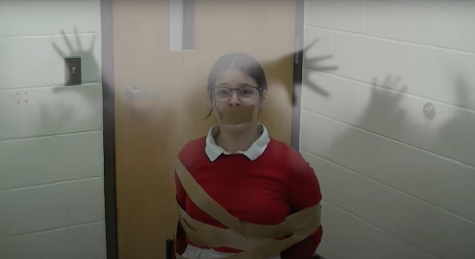Scholastic journalism community gathers at spring JEA/NSPA convention
Over 3,000 people in the scholastic journalism community gathered this month in San Diego, to attend the Journalism Education Association and the National Scholastic Press Association’s Spring National High School Journalism Convention. Advisers, students, advertisers and representatives from various scholastic journalism organizations, including SchoolJournalism.org, came together to “make waves” — the theme of the convention — in the conversation on how best to integrate journalism into schools.
The convention began early Thursday morning and finished Saturday evening. All three days were packed with breakout sessions, speeches and seminars. Over 200 professional journalists spoke. The keynote speakers were Laura Castaneda and Larry Himmel, both of whom have won Emmys for their work at national news stations. Former JEA president Jack Kennedy, who has been attending JEA conventions since 1983, also spoke to a room of several hundred on narrative and persuasive writing.
“One of the hallmarks of our convention is the plethora of individualized breakout sessions our attendees can use to customize their learning experience,” said Kelly Furnas, the executive director of the JEA.
Furnas said the presentations on broad but crucial journalistic skills, such as writing, photography, multimedia broadcast and design, are the most popular at the convention. But there are also specialized sessions created for smaller audiences who want to learn about a niche aspect of journalism, such as computer-assisted reporting and profile writing.
The spring convention is a springboard for getting students and teachers excited about the upcoming year, JEA President Mark Newton said. Newton attended with his own advisees, who he said had a blast.
“They get to talk to their peers from across the country who are in the same kind of activity at school and share their passion,” Newton said. “The convention challenges students, but it also creates a sense of camaraderie and partnership among them.”
This spring’s convention was special because JEA announced the release of its complete high school journalism curriculum. It is available to members only and emerged out of an increasing demand among secondary-school teachers.
“We heard from teachers over and over who needed help creating materials for their classroom,” Furnas said. “Too often, journalism teachers have to work in isolation at their own schools, and we wanted to tell them loudly that they are not alone. We now have hundreds of lesson plans, activities, assessments and presentations to prove it.”
Even though it’s only April, Newton said he believes the new curriculum has teachers and students alike eagerly awaiting the 2014-15 academic year.
“The teachers’ excitement about the dynamic and robust curriculum trickles down to the students,” Newton said. “The energy at the convention was incredible. I just wanted to bottle it.”











